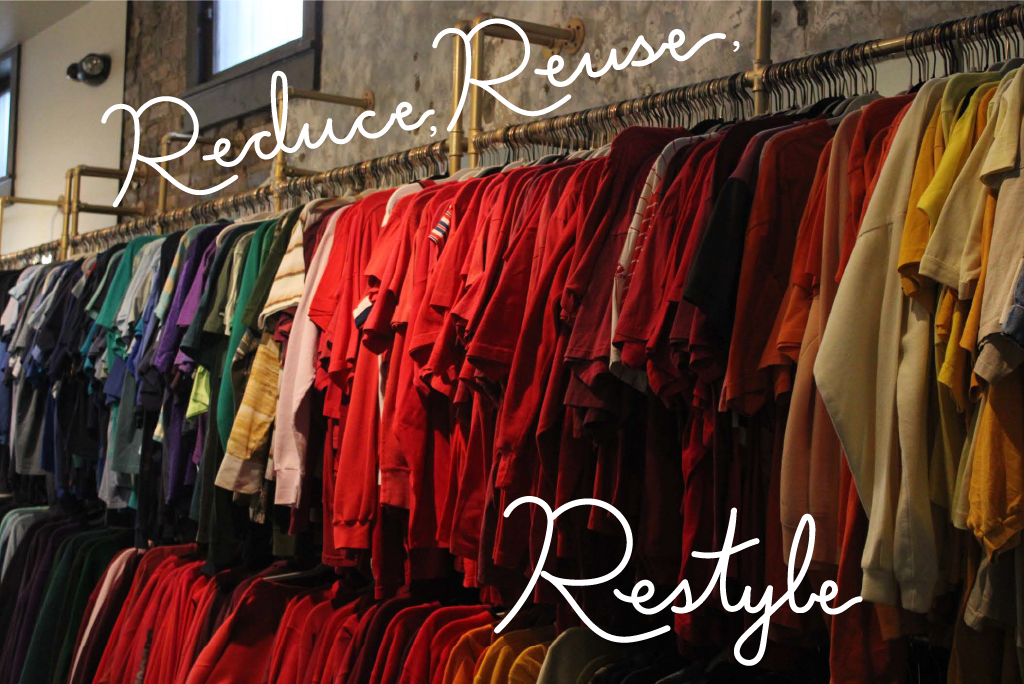A neon green glow illuminating a pitch black room. Flashing lights and a mushroom cloud. Skeletons of the living littered across the city, frozen eternally in their daily routine.
This is always the final result when nuclear energy is utilized anywhere in the world.
At least, according to “The Simpsons.”
In episode after episode, the show illustrates the many harmful effects of having a nuclear power plant in your city. Whether it’s incompetent workers, nuclear meltdowns or even bombs, the show is sure to give the viewers a detailed, terrifying reenactment of disasters.
Though these descriptions might have elements of truth, “The Simpsons” inaccurately portrays nuclear energy as an all-around detriment to society, which influences almost everyone who watches it.
In a Louisville-based survey asking about general and specific knowledge about nuclear energy, 39 of the 48 respondents stated that it was represented negatively in news, entertainment and social media, and six mentioned “The Simpsons” as a source.
But this show wasn’t the only one listed about the impact of nuclear energy. Other media included “The China Syndrome,” “Chernobyl,” “Oppenheimer” and “Three Mile Island.”
Bombs, meltdowns and waste remain the most feared aspects of nuclear energy, and shows like these help perpetuate that fear — but how accurate are they?
And what if nuclear energy was actually a solution for our future?
Defining the Crisis
On Jan. 20, 2025, President Donald J. Trump issued an executive order titled, “Declaring a National Energy Emergency,” which detailed plans to focus government energy efforts more on fossil fuels. It cited the “harmful and shortsighted policies of the previous administration” as reasoning for this shift from clean energy initiatives.
Though there are many definitions of what constitutes an energy crisis, the general idea is that it is a severe shortage in the supply of energy to a nation’s economy — something the U.S. is not currently experiencing, and hasn’t since 2005.
In fact, according to the U.S. Energy Information Administration, in 2023, the U.S. produced over 37.8 trillion cubic feet of natural gas. The Investing News Network reports a total global production of natural gas at 143 trillion cubic feet, which means the U.S. makes up over 25%. Plus, the country’s rates of production have surpassed consumption, meaning there is a surplus of energy, which allows for its leading export rates of natural gases.
So why, if we’ve achieved so much in the energy sector in relation to fossil fuels, are we in a national emergency to focus more on this type of energy? Why, after repeatedly stating the need to diversify the energy supply, are the powers granted in the order specifically related to repealing clean energy initiatives and drilling for more fossil fuel sources?
First, it’s important to break the issue down to its barest definitions: What are fossil fuels?
There are many different types, like natural gas and crude oil, but the overarching classification is that of a “flammable carbon compound — or hydrocarbon-containing material — formed naturally in the Earth’s crust from the buried remains of prehistoric organisms,” according to Wikipedia.
As the most sought after and in general, cheapest option, fossil fuels have been utilized for centuries to power the infrastructure people around the world enjoy today. Trump, as well as many others, not only praise the use of fossil fuels, but highly encourage them.
Back in December, in a rally in Phoenix, Arizona, Trump cited one reason why his economy was “the greatest economy in the history of our country” as his willingness to “drill, baby, drill” — something he vowed to continue into his second term. The clip, which has been used across social media platforms to advocate for environmental protection policies, represents his positive outlook on fossil fuels.
There are, of course, many benefits to fossil fuels, including speed of implementation, reliability and cost effectiveness — economically, anyway. The environmental cost is a different story.
According to NASA’s Earth observatory, the total amount of carbon dioxide produced from fossil fuel emissions in 2023 was a record 36.8 billion metric tons — and that number kept growing into 2024.
These emissions increase global warming, negatively impact air quality, harm the environment and reduce biodiversity around the world. The earth is already experiencing record breaking temperatures, and if a quality solution isn’t implemented soon, the climate crisis will continue to worsen.
From these numbers, it was and has been clear to scientists and environmentalists across the globe that new clean energy sources are necessary to preserve the planet. There are two main focuses in this area of study, the first being “renewables,” which includes solar, hydropower and wind power.
Though they serve as sustainable alternatives for those able to pay the price, the lack of reliability, long term storage and widespread infrastructure reduces the possible successes of the initiative. So how do we find a medium between disastrous environmental consequences and unreliability?
A possible solution is present in the second, more polarized area of study: nuclear energy.
From here, there will always be a gut negative reaction; an immediate fear. Images of explosions, radiation, sickness and the ever-present “what if?” replay in the back of their mind.
But what if nuclear energy was the solution not only to cost and reliability, but for the environment as well?
Nuclear Past, Nuclear Future
In the nine pages of the executive order, the concept of nuclear energy was only briefly mentioned at the very end under the “energy” definition. Not as “nuclear,” but simply the word “uranium.”
The most basic definition of nuclear energy is “the release of energy through splitting or fusing the nuclei of an atom,” but the implications of this statement are much more complicated. As of right now, fission, the splitting of a nucleus, is the only viable option for the creation of nuclear energy. Though fusion is thoroughly researched and scientists continue to make breakthroughs almost daily, the ability to uphold the constant heat and energy necessary to force the fusion of two atomic nuclei is still not in our grasp — at least not yet.
Fission, though, has been a viable option for decades. The first power plant to produce electricity from atomic energy, EBR-I, went live on Dec. 20, 1951, and from there the technology has blossomed into the resource it is today. However, with each new development — improved speed in deployment, outreach, energy capacity — came new waves of concerns.
The bombs dropped on Hiroshima and Nagasaki threatened war and proliferation, and the meltdowns at Chernobyl, Three Mile Island and Fukushima sparked fear and distrust of the increased usage of nuclear energy plants, and much of this alarm still present today stems from these three “big name” disasters and the media coverage that followed.
Three Mile Island was the first, occurring on an island in Pennsylvania’s Susquehanna River on March 28, 1979. After a cooling malfunction, a partial meltdown occurred in Unit 2. Luckily, a containment structure prevented large amounts of radiation from releasing. No one was killed, and the people exposed to small doses reported no “adverse health effects.” The incident served as a growth point for the U.S. in its guidelines for operators, designs, safety regulations and oversight by the Nuclear Regulatory Commission (NRC).
However, just seven years later, a more well-known disaster occurred, with fatal impacts for the people around it.
On April 26, 1986, during a test for new voltage regulator designs, a steam explosion occurred within the Chernobyl Nuclear Power Plant, located just 81 miles north of Kyiv, Ukraine. As each safety procedure failed, radioactive isotopes and hot debris released into the atmosphere, instantly killing 2 workers from the impact and 28 others from Acute Radiation Syndrome (ARS), as well as exposing an estimated 5 million others to radiation.
The event, presented in any way, is terrifying, but what made it especially scary was the lack of knowledge. Nothing to that scale had ever occurred, and misinformation about treatment and possible defects spread like wildfire. Plus, this ignorance set the stage for the disaster to happen in the first place.
Chernobyl’s reactors contained over 21,000 fuel assemblies — structured grouping of fuel rods that provide the fuel for nuclear reactors — but its design and construction made it so that if just three or four of those assemblies became damaged, the reactor would be destroyed. Its dangerous design and construction, coupled with poor safety regulations and lack of protocols created a perfect opportunity for a meltdown, and that opportunity arose just three years after its completion. Plus, attempts to hide the event from public view and slow actions to contain the radiation added to the reach of the disaster.
Though it may seem useless to focus on these missteps, looking at past mistakes have allowed scientists to make alterations to designs, create more in-depth safety regulations and generate a list of preventative actions and comprehensive protocols to keep a catastrophe of that or any scale from happening ever again.
Since then, only one other meltdown has occurred, in Fukushima, Japan. The cause, however, was not equipment malfunctioning or poor planning of regulation tests, but rather a combination of natural disasters: On March 11, 2011, a 9.0 earthquake followed by a reactive tsunami severely damaged the Fukushima Daiichi Nuclear Power Plant. This caused a release of radioactive materials and forced an evacuation of all civilians within a 30 kilometer radius, calling into question the risk of having nuclear power plants near any civilization — especially with the unpredictability of natural disasters.
As a result, the NRC implemented more precautions and mechanisms in order to prevent negative impacts from natural disasters — specifically flooding and earthquakes. While this call and response form of innovation might not seem proactive, it is how discoveries are tweaked and improved to be useful integrations in society.
Rodney Andrews, a director and professor of chemical engineering at the University of Kentucky Center for Applied Energy Research, has studied the issues causing all three disasters and seen the effect of applied solutions from both Chernobyl and Fukushima.
“The United States never allowed anyone to use the design that was used for Chernobyl — that used a giant block of graphite as the moderator,” Andrews said. “We wouldn’t do that, that was something the Soviet Union did.”
For Fukushima, the case was different since it was caused by natural disasters, and yet scientists still made improvements. According to Andrews, the NRC changed rules for the regulation of U.S. energy reserves to avoid the problems presented in Japan.
“They had their backup generators on site,” Andrews explained. “When the site flooded, they flooded as well, so now you’re required to have equipment off-site so that that wouldn’t happen.”
However, with each disaster, the word “nuclear” became more and more closely associated with “danger,” and this fear continues to impact public perception today, now paired with economic, environmental and political concerns.
Though steps have been taken and progress has been made to reduce the risk of meltdowns and other issues, the environmental cost is another story.
Adding Up the Costs
Nuclear waste, or the byproducts of nuclear energy production, often requires long-term isolation from civilization, depending on the radioactivity of the remaining isotopes. Many countries have proposed and implemented recycling programs in order to reuse valuable minerals and reduce radioactivity of the waste.
However, the most potent disadvantage to this recycling process is the easy access to technology and resources necessary for nuclear proliferation. Nuclear energy in the form of bombs and other weapons of mass destruction remain a fear of further power plant implementation — especially within the current political climate — and the procedures involved are more complicated than they seem.
Fission is the process of creating energy by splitting an atom, and though their purposes are fundamentally different, the materials used for civilian energy use and the creation of nuclear bombs remain the same. The atom utilized for nuclear energy is uranium-235, but uranium-238 is simultaneously mined during the process and can easily be turned into plutonium-239, the cheapest and most widely used isotope for nuclear weapons.
Uranium-235 can also be used, but since it has such a small critical mass and the weapons require at least 20%, it must be enriched — a time-consuming and costly undertaking.
As defined on Wikipedia, nuclear proliferation is “the spread of nuclear weapons, fissile material, and weapons-applicable nuclear technology and information to nations not recognized as ‘Nuclear Weapon States’ by the Treaty on the Non-Proliferation of Nuclear Weapons,” and a common argument against the further integration of nuclear energy.
Frank von Hippel is an emeritus senior research physicist at Princeton University specializing in international policy surrounding nonproliferation, nuclear power and energy issues. He describes nuclear proliferation as “when an additional country acquires nuclear weapons.”
“It didn’t have nuclear weapons before, and sometimes — often — that is through the exploitation of a civilian, of a technology that has a legitimate function,” von Hippel said.
Often caused by fear of falling behind, more powerful forces invading and infringing a countrys’ rights, proliferation can come in many forms. During the Cold War, the U.S. — especially under John F. Kennedy, who sped up the process of building nuclear weapons after claiming the Eisenhower administration allowed for a “missile gap” to form between them and the Soviet Union — prioritized increasing their weapons concentration.
After giving a talk in Canada, von Hippel overheard conversations in regard to Canadian and U.S. international relations.
“The Canadians are saying, ‘My God,’ you know? ‘Trump is, he’s talking about making us the 51st state. We can’t stand up to the American Army,’” von Hippel said. “‘Maybe we need nuclear weapons.’”
These ideas of competition and protection are dangerous for the proliferation of weapons, and unfortunately, technology allowing for the recycling of nuclear fuel only increases caches of plutonium and uranium.
Recycling fuel is a process in which components utilized in nuclear power plants that have been left over after usage are reprocessed and separated, creating higher concentrations of uranium-235, uranium-238 and plutonium-239, which can all be used in nuclear weapons to some degree. While 238 itself isn’t a component of nuclear weapons, it can be used to create more plutonium-239, a highly reactive part in plutonium-based nuclear weapons. When enriched — through a similar process as recycling — 235 is also a dangerous resource as it plays a crucial role in the creation of uranium-based nuclear weapons.
For many countries, recycling initiatives are put in place for environmental purposes, but von Hippel believes it “isn’t very useful” or “economic.”
However, Pierre-Clement A. Simon, a computational scientist for the Idaho National Laboratory, views the opposite.
“It’s been successful in the sense that they take the used fuel and then repurpose it, and they’re able to use it and minimize the amount of — greatly minimize — the amount of fuel that needs to go, introduced for long-term storage,” Simon said.
According to the International Atomic Energy Agency’s 2022 IAEA Nuclear Energy Series, “Worldwide, there is an estimated 263 000 t HM of spent fuel in storage, and 127 000 t HM of spent fuel has been reprocessed.”
This means that almost half of all spent fuel in storage has been reprocessed. However, this only means that it has been recycled, not whether the reduction in toxicity and reactivity time was effective in terms of the cost — one of the overall main concerns of both recycling and the increased implementation of nuclear power plants across the U.S.
In a report from the HARVARD Kennedy School, Belfer Center for Science and International Affairs, the reprocessing price of nuclear waste would be more expensive than direct disposal of spent fuel at $1000 per kilogram, unless the price of uranium reaches $360 per kilogram. With kgHM defined as kilogram of heavy metal, or the measurement used to measure nuclear fuel mass, mills/kWh as 1/1000th of a dollar and kgU as kilograms of uranium, the report came to the following conclusion.
“At a uranium price of $40/kgU (comparable to current prices), reprocessing and recycling at a reprocessing price of $1000/kgHM would increase the cost of nuclear electricity by 1.3 mills/kWh,” it read. “Since the total back-end cost for the direct disposal is in the range of 1.5 mills/kgWh, this represents more than an 80% increase in the costs attributable to spent fuel management.”
In other words, since the current cost of kilograms of uranium is almost 90% less than the cost necessary to even out with the reprocessed cost, the process of recycling is not the most cost effective approach to minimizing waste.
However, this just includes the costs of recycling.
The time and economic cost through the process of creating a functioning nuclear power plant is another highly contested issue for its implementation.
To calculate the overall price of building a nuclear power plant, the World Nuclear Association focuses on capital and plant operating costs. The process acquires capital costs prior to construction in the licensing, design and investment process, and during construction through equipment, engineering and labor. The latter necessitates a paid staff knowledgeable of all processes and regulations, quality storage and disposal of waste and management of fuel purchase.
According to a study by Sustainability by the Numbers, “Companies that are planning new nuclear units are currently indicating that the total costs (including escalation and financing costs) will be in the range of $5,500/kW to $8,100/kW or between $6 billion and $9 billion for each 1,100MW plant.”
The study also details the time cost, claiming the average construction time for a nuclear power plant is seven and a half years.
“It doesn’t make economic sense in competition with wind and solar,” von Hippel said.
He instead argued to renew the lives of already existing nuclear power plants in order for an increased focus on hydropower, wind and solar power.
“They’re cheaper. The capital constant, both capital and the operating costs, are lower,” von Hippel said. “At the same time, the price of nuclear power plants has gone up. The price of photosol’s and wind turbines have gone down dramatically.”
Making up 19.8% of the total energy in the U.S. in 2023, hydropower, wind and solar are driving parts of the energy infrastructure and are taking strides every day to grow across the country. However, the main drawback, as explained by Andrews, is not the cost, waste, environmental impact or risk of disaster, but rather an inability to store energy for long-term use.
“The challenge with renewables is energy storage. You produce power essentially when you don’t need it, and so moving that availability of power around requires energy storage and we’re not there yet with that,” Andrews said. “Renewables are getting better because we’re improving our ability to store energy, but it is not something that we are ready to start doing on a large scale yet.”
Andrews also sees the increase in employment as an appealing aspect of building renewable sites, but since it requires so few people to run after its completion, he believes nuclear power is more economically feasible for continuous job production.
One of the main benefits highlighted by renewable energy advocates, however, is health.
In With the Old
For both coal and nuclear, the environment is harmed, either through the process of creation or due to a failure to complete the process successfully. Either way, there are harmful consequences for those who live near these sites.
“Nobody wants a waste repository in their backyard, and so there’s ‘not in my backyard’ problem,” von Hippel said. “‘Better active today than radioactive tomorrow,’ you know?”
However, many Louisville residents voiced a hope to increase the usage of nuclear power plants in the U.S. energy district.
“I think that nuclear energy, if well regulated, can do numbers for the United States,” Sean Lattig, 17, a junior at duPont Manual High School, wrote. “Not only is it safe for the environment, but it can also produce many jobs and boost the economy.”
While von Hippel agrees that regulation is a key point in reducing proliferation, he argues that new nuclear power plants would not benefit the economy.
“I’m in favor of extending the lives of the existing nuclear power plants as long as they can be safely extended,” von Hippel said. “But I think spending especially government money on new nuclear power plants, it doesn’t make economic sense.”
Instead, von Hippel hopes to see a future running fully on renewable energy with minimal increases in nuclear energy.
“I’m for keeping on keeping the existing nuclear power plants in the U.S. — they provide about 20% of U.S. electric power — online as long as possible to help with the transition,” von Hippel said. “I think that we can make a transition to all-renewables.”
However, others believe it is impossible to make this transition from fossil fuels without the increased implementation of nuclear energy throughout the U.S.
“If we’re moving away from fossil fuels, we don’t have any choice but to use nuclear energy,” Andrews said.
Simon agreed, citing Germany as proof of the process.
“Germany as a country decided to move away from nuclear,” Simon said. “What was supposed to replace that energy? Because you know Germany being a big industrial nation, it needed a lot of energy. The goal was to develop a lot of renewable energies, like wind, solar and things like that. What I think we’ve seen is some of the consequences of that is by phasing out nuclear, the carbon emission raised and the price has raised.”
David Schenk, 17, a junior at Manual and another survey respondent, also believes in the usage of nuclear energy, but rather on the basis of public perception for clean energy as a whole.
“I believe nuclear energy is the next step in making clean energy more normalized in the U.S.,” Schenk said. “Especially because the cost to consumers for nuclear energy is relatively low and not dependent on coal prices.”
Still, it’s important to note that, even if nuclear energy can provide widespread energy across the globe, it requires time and money that not all countries have.
“Fossil fuels are necessary in certain applications, and in countries that currently don’t have access to clean energy,” Dennis Kuo, a chemistry teacher at Manual, wrote in the survey. “It would be ethically dubious to limit developing nations from expanding their energy infrastructure. If the international community were to impose strict limits on expanding the energy infrastructure of developing nations using fossil fuels, they should also subsidize the development of clean energy sources in those nations.”
Fossil fuels still provide crucial energy infrastructure to developing countries, but the issue arises when countries with the resources to make changes place the same, if not, more, importance on coal and oil reserves.
“I think it’s very unfortunate that President Trump is against solar, against wind and he’s putting up barriers to those technologies,” von Hippel said. “At the same time, he’s happy to promote fossil fuels. It’s perverse in so many ways, so I think that’s a crisis. I really think there’s a crisis in government policy right now.”
The People’s Eye
Despite Trump’s calls for increased oil drilling in Alaska and further dependence on fossil fuels, if we are in an energy crisis as well as a climate crisis, why hasn’t the U.S. worked to combat both when two proven options lay directly in front of them?
There are two main factors in whether something is implemented in a country; the first is public perception and acceptance.
“People have a negative connotation with the word ‘nuclear,’ and while it has the potential to be unstable, continued research and improved implementation along with public education on it would be a good step towards getting to clean energy and not being fossil fuel dependent,” Erin Kramer, a 10th grade English teacher at South Oldham High School, wrote in the survey.
Simon points to social media as a cause of widespread misinformation and lack of productivity.
“When things are so passionate, it’s sometimes very hard to have a platform where you can have fact-based discussions,” Simon said. “A lot of the discussions, for example, happen on social media, and I think that makes it very difficult.”
However, before the rise of social media and even the internet, it was the news and entertainment media that spread information through both journalistic and storytelling settings. After the Chernobyl disasters, dozens of movies and TV shows released even decades later, reliving the same or similar nights with different plots, angles and characters, but the same emotion: fear.
Though most were geared toward adults, one TV show has had a worse impact on nuclear opinions, starting with the youngest age group.
“In pop culture, I think a lot of people have seen how nuclear is being portrayed in pop culture like ‘The Simpsons’ or apocalyptic movies, where nuclear is the end of the world, and I think that really marks people’s opinion,” Simon said. “If people are not in touch with people who communicate about nuclear, and that’s their only exposure to nuclear, I think that can have a big negative impact on the perception of where nuclear is.”
Andrews agrees about this impact, but for Jason Hansen, a distinguished research economist at the Idaho National Laboratory, there is still hope to utilize media for positive, informational depictions of nuclear energy. He cites the recent Miss America winner, an advocate for nuclear energy, as an example of this shift.
“There’s also films that have been published recently, several different films on nuclear technologies that have been oriented towards training, but yet informative at the same time,” Hansen said. “That goes a long ways to helping people understand the safety aspects of nuclear technology.”
Though increased outreach through entertainment media for those who may be interested in the topic does aid in this fight, the issue remains where it started: with the youth. If children are continuously exposed to “scary” topics they don’t have any outside information on and from media they trust, the future generations will base their decisions on notions they may have been subconsciously accepting since their childhood.
“A big, important aspect of reaching a large audience of people is helping young people and new generations to understand this, the safety and security and reliability, and really how safe nuclear is from the perspective of all of the controls that are in place to keep it secure,” Hansen said.
Still, without a space for educated conversations with professionals from backgrounds in the positive and negative aspects of the nuclear energy discussion, there can be no progress. Even with hundreds of articles, studies and interviews about the topic, none of it matters if that information doesn’t reach the most critical audience: the public.
The second factor, largely the driving force behind changing public perception and gaining that national audience for discussions, is education and outreach.
When asked whether they’d studied the effects and implementation of fossil fuel, renewable and nuclear energy, 17 out of 48 survey respondents reported that they had, and 15 said “sort of.”
Of those 32, 21 attended Manual and took a chemistry class with a unit on the benefits and detriments of nuclear energy. But others don’t have this option.
“One thing to do is just make better information available in a way that’s accessible. We tend to get very excited about talking in very technical terms, and that doesn’t always convey information the best way to the public,” Andrews said. “I don’t think we talk about energy enough when we talk about K-12 education.”
Programs across the country are working to incorporate this mindset into their mission, but change takes time — a commodity that can’t be afforded to the climate crisis. Change doesn’t happen solely because of educational organizations, either. It takes individuals to groups to crowds, information to ideas to solutions and one overwhelming call to action to force people to listen.
“Energy is a fundamental input into society. There’s a direct correlation between the quality of people’s lives and access to reliable energy, and so, if you want to help society, to stabilize energy is a way to do that,” Hansen said. “Reaching out to young people is a major thrust in terms of how to get the message out.”
As the most crucial group to aid in these issues, it is our job and our responsibility to become informed and begin making our own educated decisions as we transition into adulthood. Our voice has been and will always be the next step toward a brighter future.









